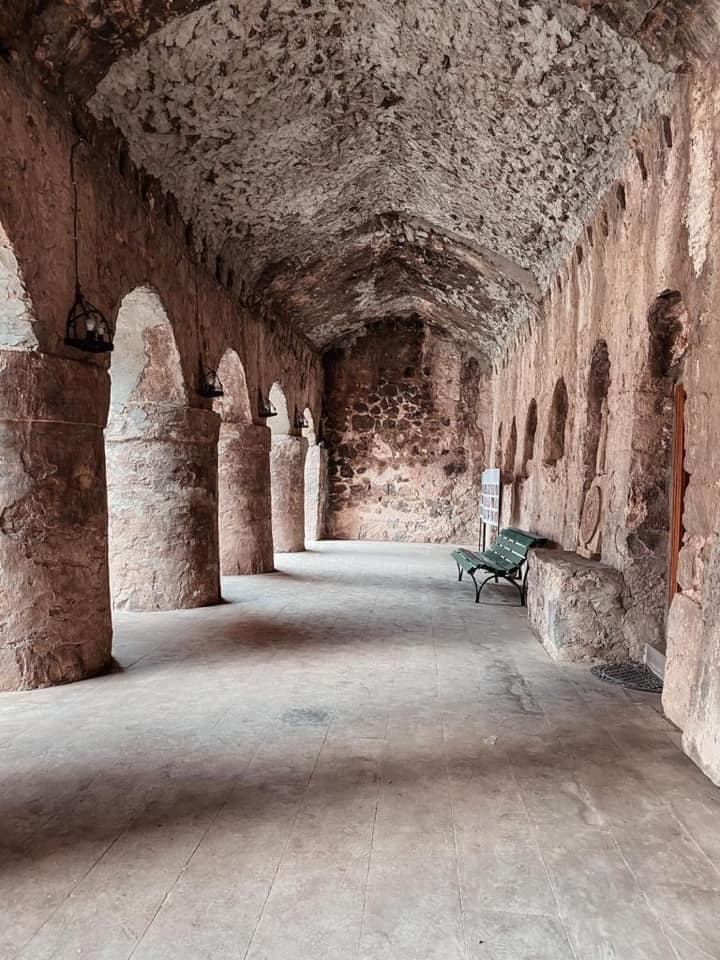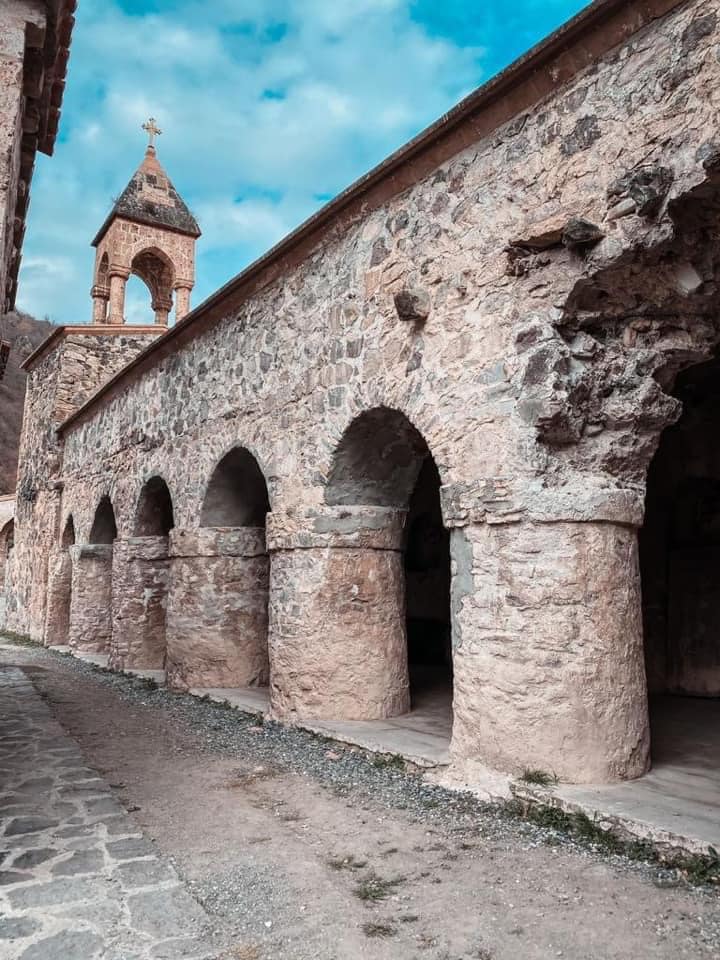One of the most wonderful monuments of Artsakh, the Dadivank monastery complex, not only makes an indescribable impression on visitors, but also fascinates, captivates, transforms a person... And the road to the revival of the monastery complex was not easy.
I visited the monastery complex built in IV-XVII centuries when I first went to Artsakh. The road leading to the shrine was long and difficult, but it was worth overcoming that road to see Dadivank. We reached the monastery in the evening.


It is difficult to convey the state of mind when you are walking, tired and tormented by bumpy roads, and at the next bend in the evening twilight, the view of an architectural monument of indescribable beauty opens up. I'm not exaggerating, that scene really takes your breath away. Dadivank captivates with its domes at once...
It was 7 years ago. The complex was in a state of collapse. the temple, whose walls were covered with soot, was not functioning. However, even in that form, the value of the monastery complex was obvious. After the small excursion conducted by the priest, it became unclear how such a monument could be in such a poor condition that even getting here required so much effort.
The monastic complex is named after Saint Dadi, one of the 70 disciples of Christ, disciple of the apostle Thaddeus. Dadi preached Christianity to the population of Karvachar region. However, in the 1st century he was stoned to death, the believers buried Dadi. Already in the 4th century, after the adoption of Christianity, his grave became a place of pilgrimage. A mausoleum was built, from where the monastic complex begins.
There is no evil without good
My next visit to Dadivank was recently, after the official opening of the Vardenis-Martakert highway. The road leads to Artsakh through Karvachar region, where the monastery complex is located. The road leading to the monastery was also improved.
Some buildings of the complex have been renovated, the temple is already functioning. The walls are cleaned, two of them are decorated with frescoes of the XIII century, which were hidden under the soot for a long time.
Dadivank murals
As Father Hovhannes Hovhannisyan, abbot of Dadivank and spiritual pastor of Karvachar region, told, the only wall paintings in Artsakh were preserved due to circumstances.
"In 2015, I was appointed abbot of Dadivank and spiritual pastor of Karvachar region. The renovation of the monastery started in the same year, mainly with the funds of Armenian benefactors... Special means were needed to clean the walls from smoke so that the frescoes would not be damaged. We invited specialists from Italy, and they estimated the work at 36 thousand dollars. "Thanks to benefactors and the state, we managed to collect that money and restore the frescoes created 720 years ago," said the spiritual pastor.
One of the frescoes depicts Jesus delivering the Gospel to Nicholas the Wonderworker. The Mother of God and Archangel Michael can also be seen here. Some parts of the mural were painted with scarlet. It follows from the visible inscription that it was made in 1297.
The second fresco depicts St. Stephen, who preached Christianity, but the people refused to accept the teaching and stoned him. The fresco shows how God's angels take his soul to heaven, and he says: "Father, forgive them, for they know not what they do."
Lord Hovhannes considers that the frescoes were miraculously saved.
"The churches of Artsakh, including Dadivank, functioned until 1921, that is, before the establishment of Soviet customs. Monasteries were closed at that time, and churchmen were arrested and deported. In the late 1950s and early 1960s, a Kurdish shepherd was settled in Dadivank. He came with his big family: parents, wife and children. They gave him sheep, cows, horses, donkeys, and the whole monastery complex turned into a barn," the priest says.
First of all, the Kurdish shepherd destroyed the staircase leading to the second floor, so that the children could not climb up or fall down from there. To keep warm, the family lit a bonfire in the center of the temple every evening.
However, as noted by Lord John, there is no evil without good. During the 8-10 years that the Kurdish family spent in Dadivank, the walls of the church were completely covered with moss, hiding the priceless murals and writings from the eyes of the enemy. In addition, the pastor protected the territory of the monastery complex from criminals, considering it his property.
"This was the reason why Azerbaijanis did not notice the murals and did not destroy them during the national liberation struggle of Karabakh in the 1990s. On April 3, 1993, during the liberation of Karvachar region and Dadivank, when I was still the abbot of Gandzasar, I was one of the first to enter the monastery. When we entered, we saw that there was dung all around, the walls were completely burnt, only 8-10% of the murals were visible," says the priest.
On one of the walls of the church, he showed us a small, black square section that was left as a sample so that visitors could see what color the walls once were.
The revival and baptism of Artsakh
The works were completed in 2015, and on January 1, 2016, the church started functioning again.
Come on